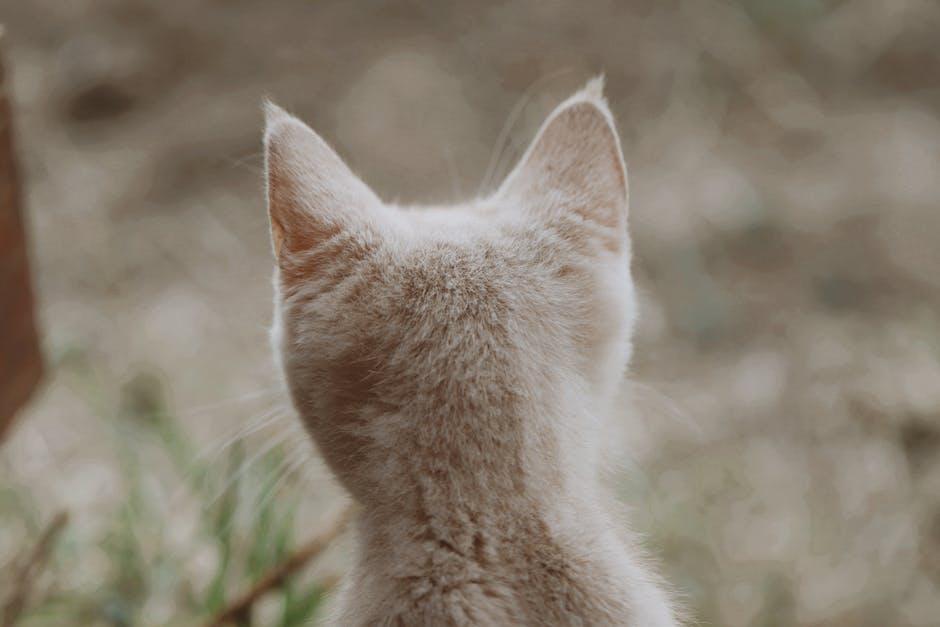How Pets Use Their Senses to Navigate New Experiences

Pets bring joy and companionship into our lives, but have you ever wondered how they perceive and adapt to the world around them? Just like us, our furry, feathered, or scaly friends encounter a myriad of new experiences every day. From exploring a new park to meeting unfamiliar faces, dogs-and-cats-in-behavior/” title=”The Cognitive Differences Between Dogs and Cats in Behavior”>pets rely heavily on their finely tuned senses to navigate these adventures. Understanding how animals use their senses—sight, smell, hearing, touch, and even taste—can deepen our appreciation for their resilience and adaptability. In this article, we’ll explore the fascinating ways pets harness their sensory abilities to make sense of new environments and situations, offering insights into their unique perspective of the world. Whether you’re a pet owner or simply an animal enthusiast, join us as we delve into the remarkable sensory world of our beloved companions.
Understanding the World Through a Pets Eyes
In the realm of animal senses, our furry companions possess a fascinating array of tools that help them understand and navigate the world around them. Pets experience their environment in ways that are both similar to and distinct from humans, offering us a unique perspective on sensory perception. Dogs, for example, have an extraordinary sense of smell, which is their primary tool for exploring new experiences. Their noses are equipped with up to 300 million olfactory receptors, compared to a human’s mere 5 million. This allows them to detect subtle scents and gather information about their surroundings, such as identifying other animals, detecting changes in weather, or even sensing the emotional state of their owners.
Cats, on the other hand, rely heavily on their keen sense of hearing and sight to make sense of new environments. Their ears can rotate 180 degrees, allowing them to pinpoint the exact location of a sound, while their eyes are adapted for low-light conditions, making them excellent night-time explorers. Other fascinating ways pets use their senses include:
- Whisker Sensitivity: Cats and dogs use their whiskers to detect changes in air currents, which can help them sense nearby objects or navigate tight spaces.
- Vibrational Sensitivity: Many animals, including rabbits and rodents, can sense vibrations through their feet, aiding them in detecting predators or approaching humans.
- Thermal Detection: Some pets, like snakes, have heat-sensing pits that allow them to detect warm-blooded prey even in complete darkness.
The Role of Smell in a Pets Exploration
When it comes to exploring their environment, pets rely heavily on their sense of smell to gather information and make sense of the world around them. This olfactory ability is particularly pronounced in dogs and cats, who use their noses to decode a complex array of scents that tell stories about other animals, people, and objects. Smell serves as a primary tool for pets to navigate new experiences, helping them identify familiar territories, locate food, and detect potential threats. The rich tapestry of aromas they encounter allows them to understand their surroundings in a way that humans can only imagine.
- Scents as Signposts: Pets often use scent markers left by other animals to gauge their environment. These markers can indicate territory boundaries or signal the presence of other creatures.
- Olfactory Memory: Pets remember specific smells associated with positive or negative experiences, aiding them in recognizing safe or dangerous situations.
- Communication: Smells are a form of communication for many animals, with pheromones playing a crucial role in conveying information about mood, health, and readiness to mate.
Understanding the role of smell in your pet’s exploration can enhance the bond you share, as it opens a window into their world and helps you appreciate the nuanced ways they interact with their environment. So, next time you see your pet sniffing around, remember they’re not just curious—they’re gathering a world of information through their remarkable sense of smell.

Hearing the Unheard: How Pets Perceive Sound
In the intricate world of animal senses, sound plays a pivotal role in how pets interact with their environment. Our furry companions often possess auditory abilities that far exceed human capabilities. For instance, dogs can hear frequencies ranging from 40 Hz to 60 kHz, while cats can detect sounds up to 65 kHz. This extraordinary range allows them to pick up on subtle noises that we might miss, such as the rustling of a small creature in the grass or the distant hum of an approaching car.
These heightened auditory senses are not just about volume and frequency but also about direction and nuance. Many pets can determine the location of a sound source with remarkable precision. This ability helps them navigate new environments, locate family members, and even sense changes in weather. Here are a few ways pets utilize their keen sense of hearing:
- Detecting danger: Hearing footsteps or unusual noises alerts them to potential threats, allowing for quick responses.
- Communication: Pets often respond to specific vocal cues from their owners, enhancing their ability to understand and follow commands.
- Social interaction: Through sound, pets can recognize the unique voices and tones of their human companions, fostering deeper bonds.
- Environmental awareness: From hearing the crackle of leaves to the buzz of insects, pets gather information about their surroundings to better adapt and thrive.
Understanding how pets perceive sound can enrich our relationships with them, as we become more attuned to their reactions and needs. By appreciating their unique auditory world, we can create more harmonious living spaces that cater to their sensory experiences.

Helping Your Pet Adjust to New Surroundings
When a pet encounters a new environment, their senses become their primary tools for understanding and adapting. Smell is often the most powerful of these senses, especially for dogs and cats. They use their noses to gather information about their surroundings, identify potential threats, and locate comforting scents. Introducing familiar items with your pet’s scent, such as a favorite blanket or toy, can help them feel more at ease in a new space.
Hearing plays a significant role too. Pets are highly attuned to sounds that may go unnoticed by humans. They rely on their acute sense of hearing to detect any unfamiliar noises, which can either be a source of anxiety or curiosity. Providing a quiet space where your pet can retreat from overwhelming sounds can aid in their adjustment. Additionally, consider these tips to ease the transition:
- Gradually introduce them to different areas of the new environment.
- Maintain a consistent routine to provide a sense of stability.
- Engage them in interactive play to distract from any initial stress.



